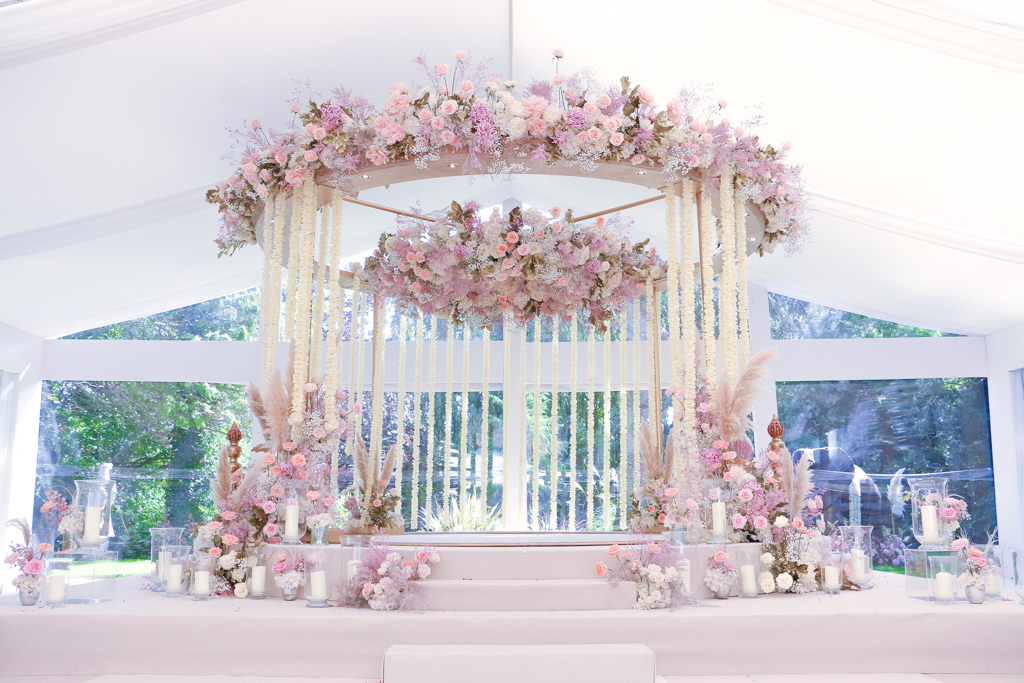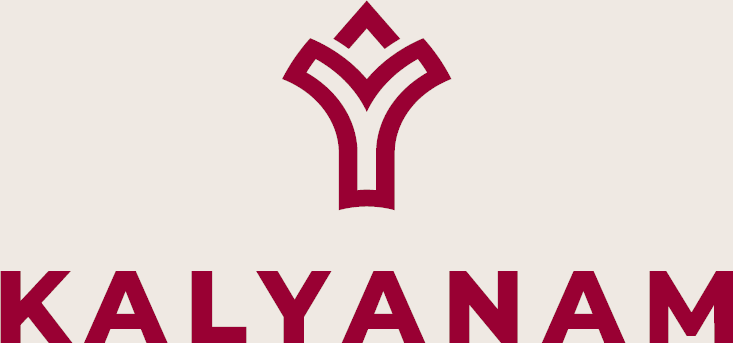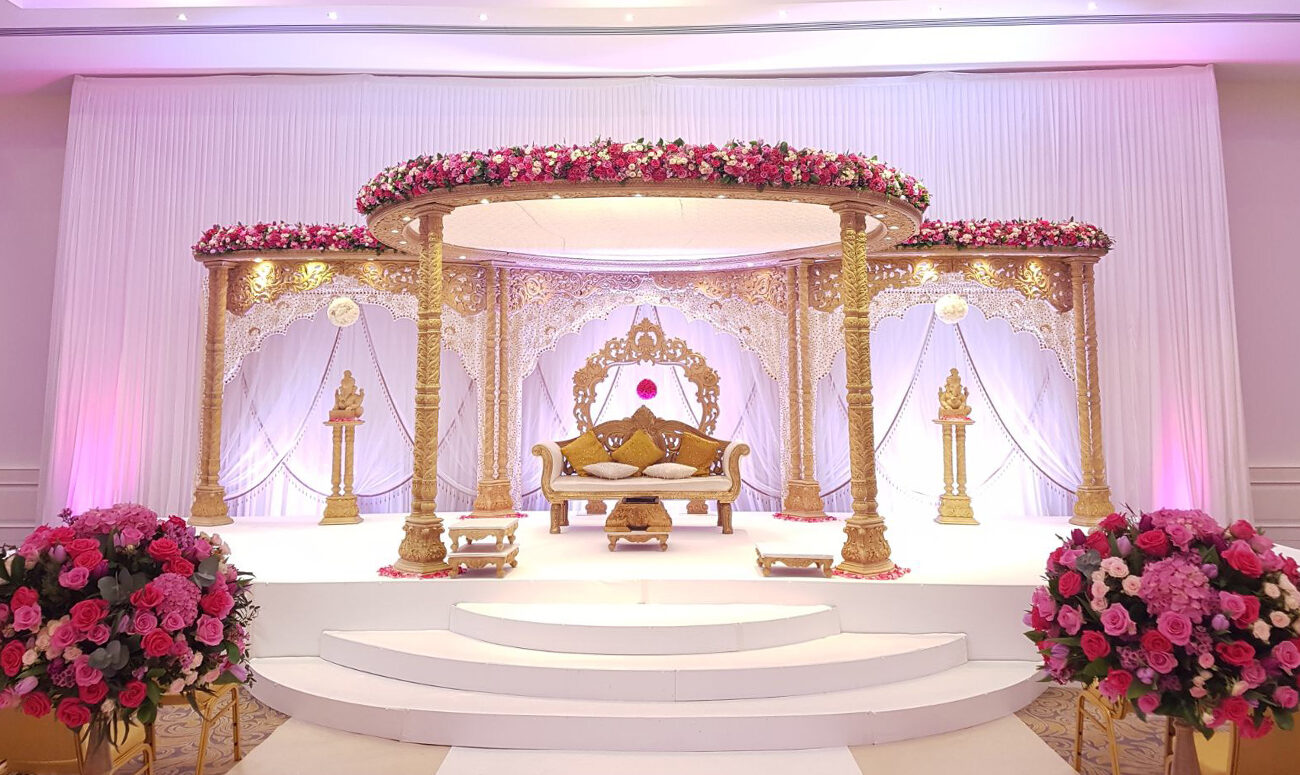A mandap is an important part of traditional Indian wedding ceremonies. It is a platform on which the bride and groom are seated during the ceremony. The mandap also serves as a symbolic boundary between the sacred and the secular and is thought to represent the world of the gods. A mandap is a special type of altar that is used in Hinduism and other religious ceremonies. It is often decorated with flowers and is used to host a variety of religious ceremonies, such as weddings and prayers.
The History of Mandaps
A mandap is an Indian symbol of protection and enclosure. It typically consists of a raised platform with a railing around its edge where people can sit or stand. Decorated walls usually surround the platform, and it’s used to honor guests or celebrate special occasions.
The word “mandap” is derived from the Sanskrit word “manapa,” which means “to shade.” Originally, mandaps were used to protect people from the sun or rain. Today, they are often used as places of relaxation and contemplation.
The history of mandaps can be traced back to ancient India. The first known use of a mandap dates back to the Vedic period ( between 1500 BC and 500 BC ), and it was primarily used for religious ceremonies such as weddings and funerals. Over time, it became more common for mandaps to be used for other purposes, like hosting banquets and anniversaries.
Mandaps became popular throughout India and East Asia over the centuries and are still used today to celebrate important events like weddings and birthdays. They are also commonly found at temples and other religious sites.

Importance of Mandaps In Indian Weddings
Mandaps serve as both wedding decorations and altars in Hindu weddings. All the important marriage rituals are performed in the sanctum Sanctorum at wedding mandaps. Wedding guests will be seated here for everyone to witness the nuptials, so it is a special place and the focus of the wedding.
In ancient India, mandaps were believed to be the only place where sacred rituals could be performed. The wedding mandap has become increasingly fashionable in this millennial world, and it can be found in marriage halls, beaches, open grounds, and more (thanks to the rise in destination wedding popularity). The modern mandaps are, of course, inspired by Vedic beliefs but with a modern twist.
As the wedding ceremony begins, the bride and groom sit at the mandap for Jai mala or Varmala. Brides, grooms, their immediate families, and the priest conducting the ceremony have separate spaces in the mandap. In some cases, the couple’s parents participate in the rituals and customs alongside their children.
While reciting holy mantras from the Vedas, the priest uses the Agni Kund (the sacred ceremonial fire) between the couple.
In the mandap ceremony, all rituals are conducted in front of the sacred fire while The priest recites Vedic hymns. Kanyadaan, Saat Phere, Saptapadi, Sindoor, and Mangalsutra are among the main wedding rituals performed at the mandap.
Importance of Mandap Designs In Indian Weddings
The traditional wedding mandap is a rectangular platform with four steps leading up to it. It is decorated at the top and around the sides with colorful pillows and elaborate floral arrangements made especially for the occasion.
Wedding mandaps come in all shapes and sizes, but they always share one common element: they are designed as an altar where guests can witness the marriage rituals. The modern versions can be found in beach resorts, gardens, or even inside elegantly designed wedding venues like hotels or art galleries! Some Mandaps also have quasi-traditional designs incorporating elements of Indian architecture, including towers, turrets, and minarets.
The mandap symbolizes the sacredness of marriage and represents the couple’s union. It is customary for guests to offer prayers before entering or after departing. Some couples choose to have a private ceremony outside of the mandap instead. In either case, your Wedding day will be just that much more special! Please contact us if you are interested in having a mandap for your wedding. We can help you choose the right design and create a stunning ceremony that will be remembered long after your big day!
How Is The Mandap Decorated?
The traditional wedding mandap is decorated with colorful pillows and elaborate floral arrangements made especially for the occasion.
There are usually several layers of beautiful white flowers at the platform’s top. These represent purity and innocence, while red roses symbolize love. Yellow chrysanthemums represent joy and happiness, while purple orchid bushes signify fertility. Finally, green ferns are a sign of abundance and life force.
The sides of the mandap are often painted in complementary colors to those on the top – this makes it easy to coordinate all your decorating efforts! You can also find mandaps decorated with ornate mirror tiles and carved wooden beams. If you have a budget to work with, consider installing an LED lighting system, so your Mandap looks stunning no matter what time of day it is!
Conclusion
A wedding mandap is a beautiful way to add an extra element of sacredness and royalty to your celebration. It can be customized to match your personal preferences, and the brightly-colored flowers and pillows create a stunning focal point for photos afterward! If you’re interested in having one made specifically for your big day, please don’t hesitate to contact us – we would be happy to help make it happen!



1 comment